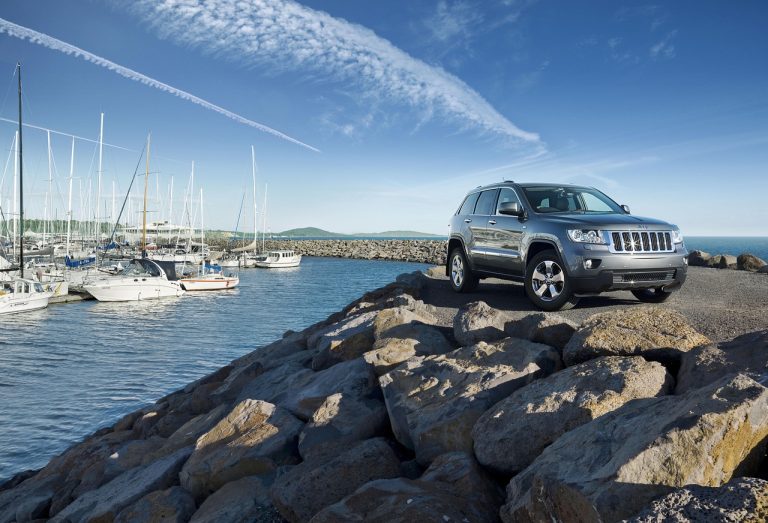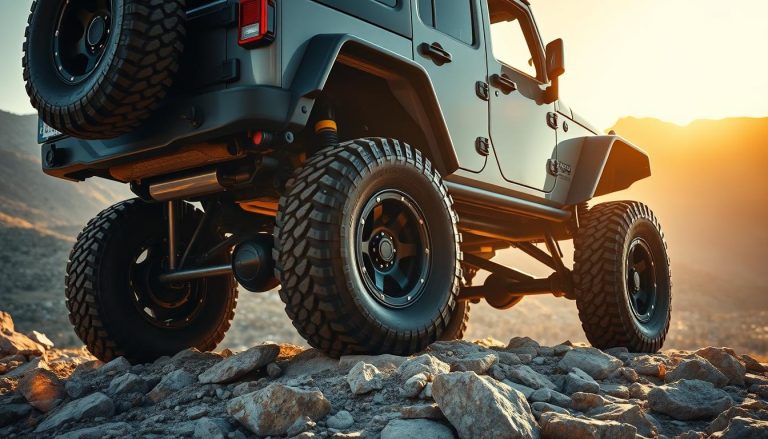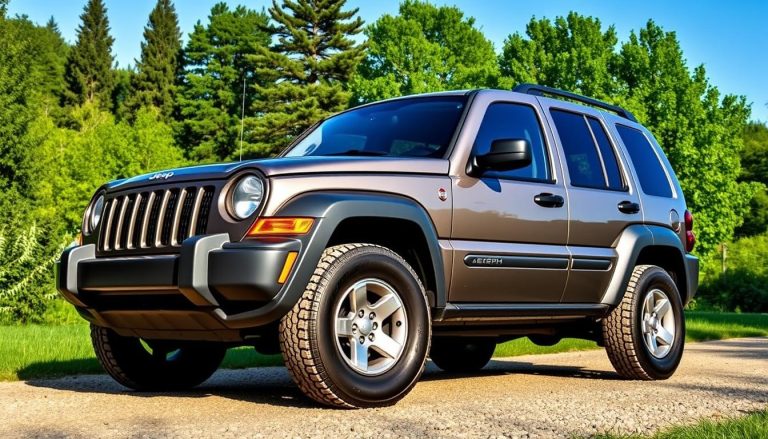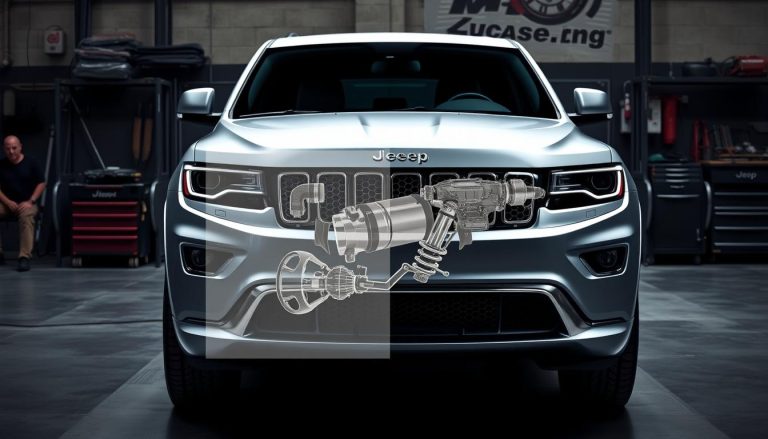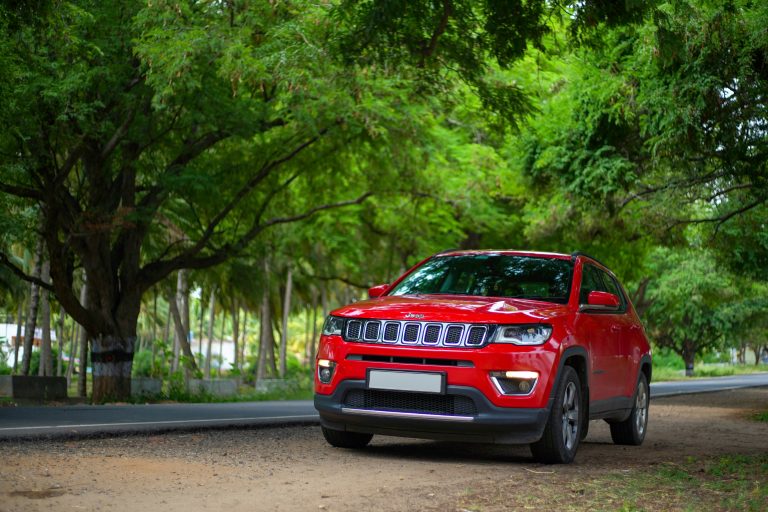Jeep Manufacturing Origins: Where is Jeep Made?
Jeep is a legendary American car brand, now under Stellantis North America. It has been a favorite among off-road lovers and car fans since World War II. These tough vehicles began as military transports made by Willys-Overland and Ford. They are now icons of American innovation and flexibility.
“Where is Jeep made” connects to a deep history across decades and places. Starting as dependable military transport, Jeeps have become beloved civilian vehicles. They’re known for lasting a long time and great at going off-road. Jeeps have been made all over the world, showing their huge appeal and strong production network.
Jeep’s history shows its lasting impact and how it has changed with different mergers and owners, leading to its current place in Stellantis. We look into Jeep’s origin story and its rise to being a legendary car that remains popular today.
The Birth of Jeep: From Military Roots to Civilian Icon
The jeep’s story starts in World War II, amid global conflict and new tech. The Willys MB was born, setting the future for Jeep. Known for being tough, adaptable, and good on rough land, it shone. The U.S. Armed Forces and their allies relied on its strength in many battles.
World War II and the Willys MB
The Willys MB’s impact during World War II was huge. Made for the U.S. Army’s needs, it was tough and went everywhere. Willys-Overland, a key maker, linked forever with this military icon. It carried troops, saved wounded soldiers, and moved supplies, showing unmatched reliability. Its fame grew, lasting long after the war.
The Transition to Civilian Jeeps: CJ Series
After World War II, people wanted military Jeeps for daily life. Thus, the civilian Jeeps or CJ series came to be. From the CJ-2A in 1945, these Jeeps kept their tough military traits but fit for civilian use. They were perfect for work, farm, or fun, making Jeep a loved brand for many.
The Evolution of Jeep Ownership
The jeep ownership history tells a story of change and growth. Jeep was first made by Willys-Overland during World War II. It was built tough for military use. After the war, the focus shifted to making Jeeps for everyone, leading to the famous Jeep CJ series.
In 1953, Kaiser Motors bought Willys-Overland and named it Kaiser Jeep Corporation. This move led to new ideas and growth. Jeep became known as a go-anywhere vehicle. In 1970, American Motors Corporation (AMC) took over, adding a new chapter to the jeep ownership history. AMC introduced new models, reaching more customers.
AMC ran into money troubles in the 1980s. Chrysler stepped in and bought AMC in 1987, bringing stability to Jeep. Under Chrysler, Jeep grew strong, with popular models like the Grand Cherokee and Wrangler.
In 2014, Chrysler joined forces with Fiat to create Fiat Chrysler Automobiles (FCA). Later on, in 2021, FCA became part of Stellantis. This latest change put Jeep in a big global company, guiding its future. Stellantis is pushing for greener technology and wants to take Jeep worldwide, while keeping its tough spirit alive.
Jeep Headquarters: Toledo, Ohio
Jeep’s main office in Toledo, Ohio is a symbol of its rich history and lively present. This place is not just an address; it captures the spirit of Jeep’s journey since its beginning.
The Original Willys-Overland Factory
The history of Jeep in Toledo begins with the Willys-Overland factory. Here, the first civilian Jeep models came to life. The factory produced the Willys MB, a key vehicle in World War II.
After the war, it started making the civilian Jeep CJ series. This switch marked Jeep’s move from military to consumer use. The factory’s shift to innovation and toughness shaped Jeep’s identity.
The Toledo Complex Today
Jeep’s manufacturing has evolved at the Toledo Assembly Complex. This site combines new production methods with its historic roots. Here, Jeep makes the Wrangler and Gladiator, mixing modern technology with traditional skills.
The Toledo Complex keeps improving, helping Jeep lead in the automotive world.
- Historical significance rooted in military heritage.
- Pivotal transition to civilian vehicles at the Willys-Overland factory.
- Modern production techniques at the thriving Toledo Assembly Complex.
From its early milestones to recent successes, Jeep’s headquarters in Toledo plays a key role in the brand’s ongoing story.
Where is Jeep Made: Main Manufacturing Locations
Jeep is a well-known American car brand that started in the United States. It first made cars at the Toledo Assembly Complex in Ohio. Over time, Jeep has grown and now makes cars in other countries too.
Jeep has factories on several continents today. This helps them reach car buyers all over the world. For instance, there’s a factory in Melfi, Italy. They make the Jeep Renegade there, which is popular in Europe.
In Brazil, the FCA Jeep Assembly Complex in Goiana is crucial for the Latin American market. This place shows Jeep’s focus on making high-quality cars. Jeep also has a big factory in China. This shows they are truly a global brand.
| Location | Country | Products |
|---|---|---|
| Toledo Assembly Complex | United States | Wrangler, Gladiator |
| Jefferson North Assembly Plant | United States | Grand Cherokee, Cherokee |
| Goiana | Brazil | Renegade, Compass |
| Changsha | China | Cherokee |
| Melfi | Italy | Renegade, Compass |
The factories listed are proof of Jeep’s dedication to creating top-notch cars. By placing their factories smartly, Jeep ensures they can easily make and send out cars. They also show they care about local buyers by making cars close to them.
Jeep Manufacturing in the United States
Jeep has a deep history of making cars in the U.S., highlighting their quality and American identity. It’s important to learn about where Jeeps are made. This shows the brand’s dedication to excellence and American craftsmanship.
Toledo Assembly Complex, Ohio
The Toledo Assembly Complex is key to making Jeeps and is located in Ohio. It’s famous for making the Jeep Wrangler and Jeep Gladiator. The complex has a long history and always looks to improve. This ensures every car is tough and performs well.
Jefferson North Assembly Plant, Michigan
The Jefferson North Assembly Plant in Detroit, Michigan, is vital for Jeep production. It makes the Jeep Grand Cherokee and Jeep Durango. With its advanced assembly methods, the plant keeps pushing for better quality. This helps Jeep stay true to its promise of tough, reliable cars.
Belvidere Assembly Plant, Illinois
The Belvidere Assembly Plant in Illinois plays a big role in making Jeeps. It’s where the Jeep Cherokee comes to life. The focus here is on detailed engineering and keeping quality high. This ensures each car proudly reflects being American-made, showing Jeep’s commitment to being the best.
Jeep’s Global Presence: International Manufacturing
Jeep has grown beyond just the U.S. and is now a big global name. Thanks to Jeep’s smart moves in international manufacturing, it has factories in Europe, Asia, and South America. This helps Jeep sell more cars all over the world.
These global Jeep assembly plants meet the needs and likes of local areas. This boosts Jeep’s name for being top-notch and reliable everywhere. Jeep makes sure its cars are always up to par, no matter where they’re made.
Next, we’ll show you some key places Jeep makes cars outside the U.S.:
| Country | Location | Key Models Produced |
|---|---|---|
| Brazil | Goiana | Renegade, Compass |
| Italy | Melfi | Renegade, Compass 4xe |
| China | Changsha | Cherokee, Renegade |
With global Jeep assembly plants, Jeep stays ahead in the world car market. This lets the company grow bigger and brings the special Jeep drive to people everywhere.
Brazil: The FCA Jeep Assembly Complex
In the lively area of Pernambuco, the FCA Jeep Assembly Complex marks a key step in Jeep’s growth in South America. It’s known for top-notch production and upholding Jeep’s quality. This complex is essential in Jeep’s worldwide operations.
Production in Goiana, Brazil
The Jeep plant in Goiana, part of the FCA assembly complex, is a high-tech wonder in car making. It makes different models for both local and global markets, ensuring high quality. The plant’s modern tech and skilled workers play a big part in Jeep’s success in Brazil.
Significance of the Brazilian Market
Jeep’s move into Brazil is a big deal. Setting up in Brazil lets Jeep reach more car buyers and boosts the local economy. This is part of Jeep’s plan to strengthen its global presence.
The Jeep plant in Goiana’s location helps distribute cars all over South America quickly. This shows Jeep’s smart planning and commitment to fulfilling the needs of its worldwide customers.
| Feature | Details |
|---|---|
| Location | Goiana, Pernambuco, Brazil |
| Main Products | Jeep Renegade, Jeep Compass |
| Key Markets | South America, Latin America |
| Workforce | Highly Skilled and Technically Trained |
European Manufacturing: Jeep in Italy
Jeep’s leap in Europe got a big boost by joining forces with Fiat. The Jeep Renegade, made in Italy, shows how well Jeep fits into the European car scene. It mixes Jeep’s tough off-road features with Italian style, making a big hit.
In Melfi, Italy, the Jeep Renegade rolls off the line at the FCA Melfi Assembly Plant. Here, tradition meets high tech, ensuring top quality. This perfect mix meets global standards and European tastes.
Jeep’s Italian production base shows its commitment to Europe. The Melfi plant benefits from the Fiat-Chrysler merger. This boosts Jeep’s manufacturing efficiency and expands its market reach.
| Model | Production Location | Key Features |
|---|---|---|
| Jeep Renegade | Melfi, Italy | Compact SUV, off-road capability, Italian design influence |
Jeep’s Italy-made cars sharpen its edge in Europe. This move boosts Jeep’s tough, versatile heritage. It ensures Jeep’s growth in the fast-changing global car market.
China: Jeep’s Expansion into the Asian Market
Jeep has expanded into Asia with a special focus on China, a top car market. They’ve built Jeep China factories to meet Chinese buyers’ needs. This is a key part of Jeep’s plan to grow in Asia.
Jeep is known for tough, reliable cars made for all terrains. Now, they’re adding new tech and features for China, blending American tradition with Chinese style.
Jeep’s work in China includes partnerships with local car makers. These collaborations ensure Jeep cars meet and surpass Chinese customer expectations. They mix old and new smoothly.
Jeep’s move into Asia is not just about making cars. They focus on marketing, customer care, and designs that feel right for the area. This complete strategy helps Jeep stay strong and appealing in a market that changes fast.
Jeep shows its dedication to Asia with cars just for that market. This proves their commitment to grow there. By always innovating, Jeep stays a leading global car brand.
| Key Aspect | Details |
|---|---|
| Production Facilities | Partnership with local manufacturers for optimized production |
| Localized Features | Advanced technology and design tailored to Chinese preferences |
| Market Strategy | Comprehensive approach including marketing, service, and design innovations |
The Role of Stellantis in Jeep Manufacturing
The joining of Fiat Chrysler Automobiles (FCA) and PSA Group into Stellantis changed how Jeep is made worldwide. This merger did more than just bring together two companies. It made Jeep better and expanded its market. Stellantis uses the best of both to make Jeeps that stand out, using new tech and creative ways.
The Merger with Fiat Chrysler Automobiles
When Fiat Chrysler joined with PSA Group, Stellantis was born. This made it a powerhouse in cars. For Jeep, this meant new tech, ideas, and places to sell. Being part of Stellantis means Jeep gets the best from both worlds. This keeps Jeep leading in cool and efficient cars.

Stellantis’ Global Strategy for Jeep
Stellantis wants to make Jeep a global name while keeping its awesome quality. By using what they got from merging with Fiat Chrysler, they can make more Jeeps in different places. This plan helps Jeep meet more fans and stay top in SUVs.
This world plan has several big ideas:
- Making more Jeeps with the latest ways of building cars.
- Bringing Jeeps to new places like Asia, Europe, and South America.
- Putting money into finding new ideas and making Jeeps greener.
With Stellantis, Jeep is reaching for the stars, thanks to big plans and teamwork from the merger. This change marks a new chapter for Jeep. It’s about mixing tradition with new ideas to make awesome cars for everyone.
| Key Components | Details |
|---|---|
| Production Techniques | Advanced and efficient methods leveraging Stellantis resources |
| Market Expansion | Broadened reach in Asia, Europe, and South America |
| R&D Investments | Focus on new technologies and eco-friendly features |
Jeep Production for the American Market
Jeep’s dedication to the US is solid. It makes its famous Wrangler and Cherokee mostly in America. This choice strongly connects with buyers who love American-made cars.
Jeep’s American production happens in key places. This keeps the quality high and creates jobs. The Toledo Complex in Ohio is crucial, making the Wrangler and Gladiator. The Jefferson North Plant in Michigan, which makes the Grand Cherokee, is also vital.
Here’s a quick look at where some Jeep models are made in the US:
| Model | Assembly Plant | Location |
|---|---|---|
| Wrangler | Toledo Assembly Complex | Ohio |
| Cherokee | Belvidere Assembly Plant | Illinois |
| Grand Cherokee | Jefferson North Assembly Plant | Michigan |
| Gladiator | Toledo Assembly Complex | Ohio |
These sites show Jeep’s commitment to the US market. By focusing on making vehicles in America, Jeep not only supports jobs. It also meets top quality standards. This fulfills the brand’s promise and meets what customers expect from American-made cars.
Historical Manufacturing Sites of Jeep
The story of Jeep becoming an iconic American car brand involves key locations. Among these, Butler, Pennsylvania, and Detroit, Michigan played major roles in shaping Jeep’s history.
Butler, Pennsylvania: The Bantam Car Company
In Butler, Pennsylvania, the Bantam Car Company created the first Jeep prototype in 1940. Facing a tight deadline and few resources, Bantam built a model that would become the famous Jeep. This vehicle was compact, strong, and showed excellent performance during World War II.
The Bantam Car Company’s work set the foundation for a legendary vehicle loved by many.
Detroit, Michigan: Ford and Willys’ Contributions
Detroit, Michigan, known for its role in car making, was vital for Jeep’s large-scale production. Ford and Willys-Overland played big parts in making and improving Jeeps for war. Ford used its large factories to make many GPW models.
Willys-Overland created the Willys MB, setting the standard for today’s Jeep. Together, they made sure plenty of Jeeps were ready for war, cementing their place in car history.
| Company | Location | Contribution |
|---|---|---|
| Bantam Car Company | Butler, Pennsylvania | Designed and built the first Jeep prototype |
| Ford | Detroit, Michigan | Mass-produced GPW model for war |
| Willys-Overland | Detroit, Michigan | Developed the Willys MB, foundational Jeep blueprint |
The Jeep Grand Cherokee Manufacturing Journey
The Jeep Grand Cherokee’s production journey is key in SUV manufacturing history. Known for luxury and off-road skills, it’s mainly made at Jefferson North Assembly Plant in Michigan. This spot highlights its vital role in Jeep’s lineup, showing their focus on excellence and innovation.
Since 1992, the Jeep Grand Cherokee has seen many updates, keeping up with tech changes and what buyers want. Its making process uses modern robots and careful handiwork, making sure every SUV meets Jeep’s strict quality standards.
The Jefferson North Assembly Plant is crucial to making the Jeep Grand Cherokee, with top-notch facilities for efficient SUV production. This plant not only aims at making top-quality vehicles but also cares about being green and keeping workers safe.
| Aspect | Details |
|---|---|
| Plant Location | Detroit, Michigan |
| Inception Year | 1991 |
| Key Model | Jeep Grand Cherokee |
| Advanced Features | Robotics, Sustainable Practices |
To meet modern needs, the SUV making process for the Jeep Grand Cherokee uses the latest tech. This includes automation and precise engineering. It ensures Jeep’s renown for lasting and reliable vehicles, with top safety and entertainment features.
Jeep’s commitment to its legacy and pushing innovation is clear in every Jeep Grand Cherokee made. As the SUV world changes, the Jeep Grand Cherokee stands as proof of Jeep’s ongoing dedication to quality and progress.
Jeep’s Commitment to American-Made Vehicles
Jeep shows deep dedication to creating tough and dependable Jeeps in America. Their famous models like the Wrangler and Gladiator are carefully put together in Toledo, Ohio. Here, they uphold the highest manufacturing standards.
Assembly Details of Wrangler and Gladiator
The Toledo plant uses modern technology and skilled craftsmanship to build the Wrangler. From putting in powerful engines to conducting final checks, they make sure every Wrangler is up to Jeep’s high standards. The Gladiator, known for being flexible and tough, is made on the same lines. It reflects Jeep’s commitment to making strong vehicles for different environments.
The Belvidere Cherokee Production
The Belvidere Assembly Plant in Illinois is crucial for making the Cherokee. This plant focuses on productivity and high-quality details at every stage of making a Cherokee. They combine durable frames with the latest technology.
By making Jeeps in America, Jeep not only boosts local economies but also keeps their innovative spirit strong. With their solid Wrangler production and detailed Cherokee making, Jeep remains a leader in quality and toughness.
Jeep Manufacturing: A Look at New Technologies
Jeep has redefined auto making with new tech, leading to better performance, efficiency, and eco-friendliness. Jeep leads with cutting-edge methods in its factories.
Robotics and automation have changed how Jeeps are made, making the process faster and more precise. This means fewer mistakes and quicker production, so every Jeep is top-notch.
Jeep is now using lighter yet strong materials like steel and aluminum. This makes Jeeps lighter and saves more fuel. It’s a win for power and the planet.
Jeep is also embracing Industry 4.0, using the Internet of Things (IoT) and data analysis. This lets them fine-tune production, cutting waste and boosting efficiency.
By using renewable energy in plants, Jeep shows its green commitment. Solar and wind power help lower Jeep’s environmental impact.
Augmented reality (AR) is another tech Jeep uses for upkeep and training. AR helps workers see instructions and fix issues fast, saving time and money.
Jeep keeps pushing tech to stay ahead, ensuring their SUVs are innovative, efficient, and sustainable. With advancements from robotics to green energy, Jeep is paving the future for cars and their fans.
Conclusion
This journey shows us how Jeep started and grew into a well-known brand. Starting with the tough Willys MB during World War II, to today’s SUVs and trucks, Jeep’s story blends military design with everyday needs.
Jeep makes high-quality vehicles both in the US and worldwide. Places like the Toledo Assembly Complex in Ohio and the Goiana plant in Brazil are key. The partnership with Stellantis helps Jeep grow globally, showing its strength and ability to change.
Jeep’s story is inspiring as it keeps evolving in a modern world. It’s a symbol of American creativity. With factories around the world and a wide range of vehicles, Jeep appeals to many. It leads in the auto world by mixing old values with new ideas.
FAQs
Where is Jeep made?
Jeep is mainly made in the USA, at places like the Toledo Assembly Complex in Ohio. They also make Jeeps in Michigan and Illinois. Plus, Jeep builds vehicles in Italy, Brazil, China, and other countries too.
What is the history of Jeep’s origins?
Jeep started as a military vehicle in World War II. It was made by Willys-Overland and Ford. The famous Willys MB helped during the war. After the war, Jeep made its first cars for everyday people, starting with the CJ series.
Where is the Jeep headquarters located?
The Jeep headquarters is in Toledo, Ohio. This special place is where the first civilian Jeeps were made. Today, the Toledo Complex is still essential for making new Jeeps.
Who owns Jeep today?
Jeep is owned by Stellantis now, a big car company made from Fiat Chrysler and PSA Group. Before Stellantis, companies like Willys-Overland and Chrysler owned Jeep.
What are Jeep’s main manufacturing plants in the U.S.?
Jeep’s big plants in the U.S. are in Ohio, Michigan, and Illinois. They make famous cars like the Wrangler and Cherokee there.
Where are Jeep vehicles manufactured internationally?
Jeep vehicles are also made overseas. They make the Jeep Renegade in Italy, for example. In Brazil, they focus on the South American market. And in China, they make Jeeps for Asia.
What role does the Toledo Complex play in Jeep’s manufacturing?
The Toledo Complex in Ohio is key for making the Wrangler and Gladiator. It keeps the Jeep tradition alive, dating back to the Willys-Overland days.

